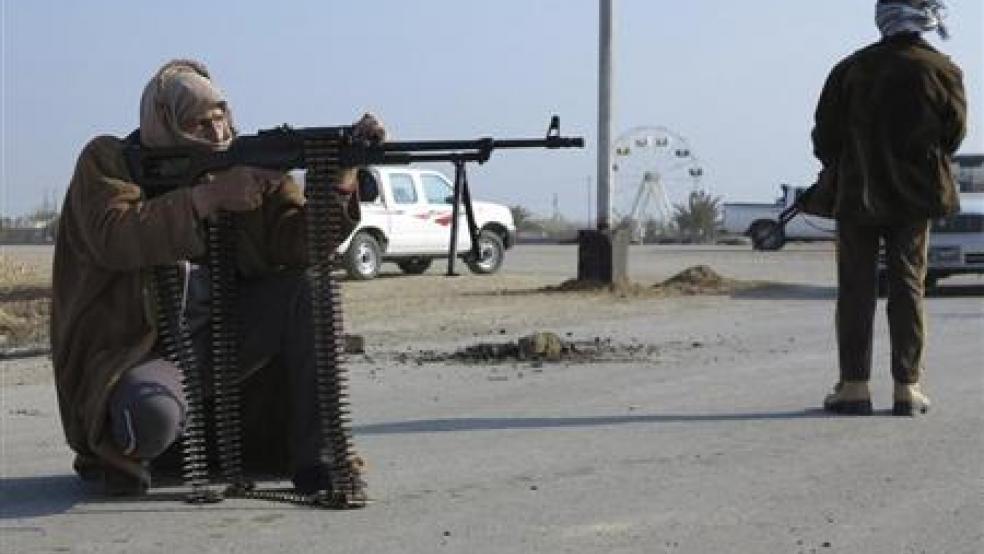The 11-month-long chaotic civil war in Yemen has reached a decisive moment. The Saudi-led coalition and Yemeni government forces are now about 30 miles from the capital, Sana’a. The city was captured in September 2014 by a coalition of Shiite Houthi rebels and elite military units loyal to the country’s former dictator, Ali Abdullah Saleh. The battle to retake Sana’a is expected to be as long and bloody as the 10-month ongoing battle to control the country’s third largest city in the southwest, Taiz.
But the Saudi-led intervention in Yemen has resulted in a slippery slope that is now threatening the entire world. More than 6,100 people have been killed so far; half of them are civilians. About 2.5 million people have been displaced from their homes due to the fighting. Many millions more are in urgent need of food, water and medical supplies.
Related: Wave of Aden Killings Tests Gulf Role in Yemen
Yet, the most alarming consequence of the Yemeni war is the rise of al-Qaeda in the country and the emergence of ISIS, the splinter group responsible for directing the Paris attacks last November and inspiring the San Bernardino shooting the following month. Al-Qaeda’s branch in Yemen, which is called al-Qaeda in the Arabian Peninsula (AQAP), is the most dangerous part of the global terror organization. Its record in attacking the West includes the Charlie Hebdo attack in Paris in January 2015, the Fort Hood shooting in November 2009, and the killing of the American photojournalist Luke Somers in December 2014.
During the last few weeks, al-Qaeda in Yemen consolidated its grip in southern Yemen, capturing at least six towns on the Arabian Sea, securing about half of the Yemen coast and a quarter of the country’s land. Taking advantage of the turmoil, the terror group holds more lands than the Houthi rebels, stretching vertically in the center of the country for 270 miles from the Saudi border in the north to the Arabian Sea in the south, and 420 miles horizontally from north of Aden, Yemen’s second largest city in the southwestern corner of the country, to the village of Qusay’ir in the east.
Last Saturday, al-Qaeda militants stormed the town of Ahwar that connects two of the terror group’s controlled territories on the Arabian Sea. After killing a local leader of the town, they raised their black banners on the government buildings. Al-Qaeda hasn’t been this strong since a decade ago, when it controlled much of the Sunni parts of Iraq before the U.S. surge of forces in 2007.
Three Yemeni provincial capitals are now run by al-Qaeda. The port of al-Mukalla on the Arabian Sea, the country’s fifth largest city and the capital of Yemen’s largest province in size, was captured by the terror group in April 2015 after a two-week battle. The militants released 300 inmates from the city’s prison, including top al-Qaeda’s commanders. They also captured several army camps with dozens of tanks, a military airfield, a presidential palace, an oil facility and the branch of Yemen’s central bank that held millions of U.S. dollars.
Related: Top al-Qaeda Commander Killed in Yemen Drone Strikes
The port of Zinjibar, also on the Arabian Sea, fell to al-Qaeda last December, five months after the Yemeni government forces retook the town from the Houthi rebels. A month later, the extremists fully controlled a third provincial capital, the southern town of al-Houta. Soon afterward, four more neighboring towns fell to al-Qaeda without much of a fight.
The rise of al-Qaeda in Yemen is a direct result of the civil war. The terror group has used the preoccupation of the U.S, the West and the region’s government with ISIS to resurge in Yemen. The U.S. has been involved in a war of drones against al-Qaeda for 15 years, killing many senior leaders of the group. However, this approach has no affect on the ground, as al-Qaeda continues to expand and replace its fallen commanders.
Another factor contributing to the growth of al-Qaeda’s operations in Yemen is the blind-eye policy that the Saudi led coalition is taking toward the group. While the Saudis target al-Qaeda occasionally, the group’s reign hasn’t really been challenged by any reliable force on the ground. On the contrary, the Saudi-supported Yemeni government forces fought sometimes alongside al-Qaeda against the Houthi rebels as it was revealed in the case of the battle to control the southern city of Taiz.
Related: Reclaiming the Title ‘King of Jihad’ Means Al-Qaeda Will Target the West
As the battle of Sana’a approaches and the country continues to unravel, al-Qaeda will capitalize on the fierce fighting that is expected to last for months to further expand its footprint across the war-torn country. With that, a safe haven will emerge for the world’s most dangerous terror group.
Al-Qaeda will use its expanded base to further destabilize the region of the Horn of Africa, where its ally, the Somali terror group al-Shabab, is operating. That could lead to the resumption of piracy in the Arabian Sea. More broadly, plots to attack the U.S. and the West will multiply.





